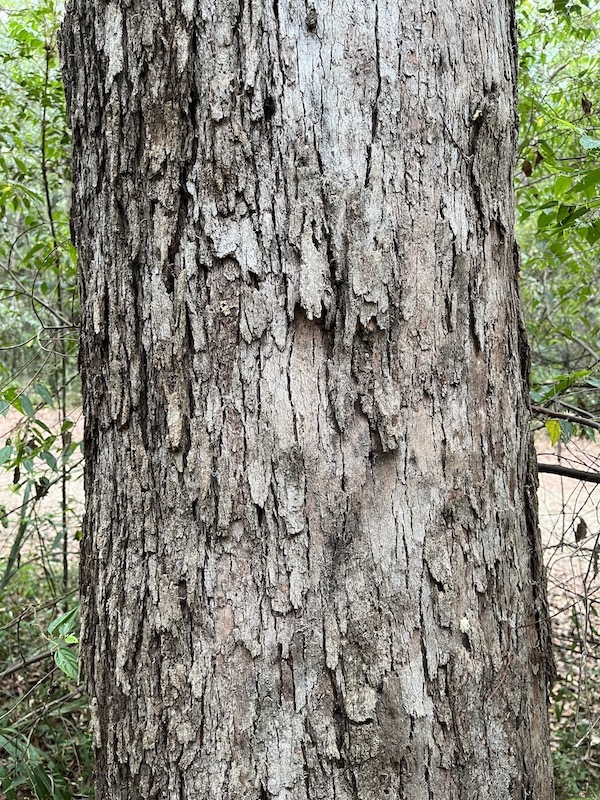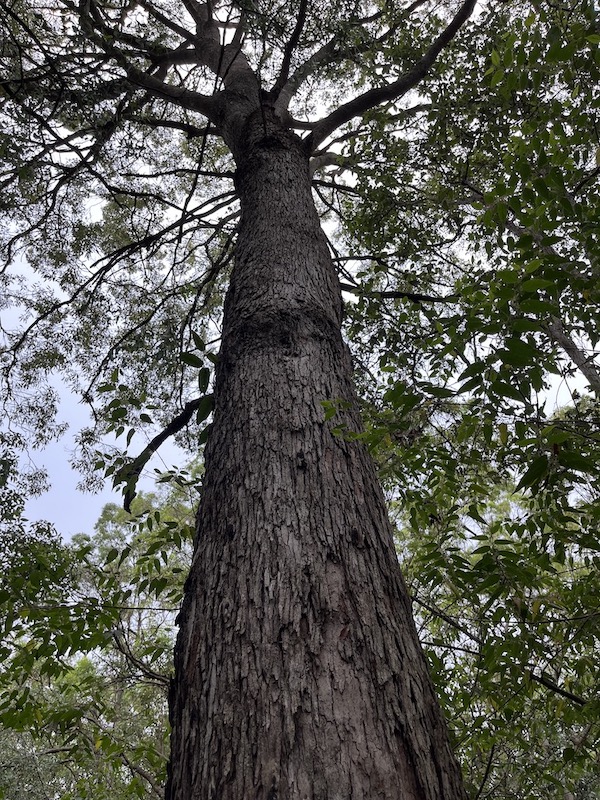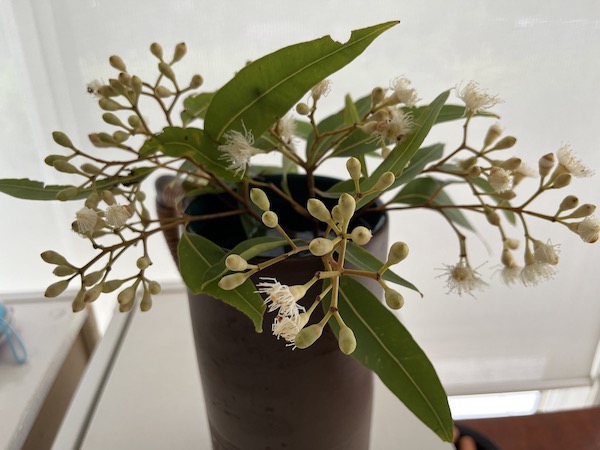It was the raucous Rainbow Lorikeets that alerted me. Their feeding frenzy around a flowering tree canopy 30m above had littered the forest floor with fallen buds, flowers and leaves. These are great aids to gum tree identification which are usually inaccessible.

Normally for mature gum trees, you can see the texture and patterning of the bark on the lower trunk. But this is rarely enough information to distinguish between the thousands of different species of eucalypts and their close allies. It is much better if you have fresh samples of the tree’s leaves, buds, flowers or gum-nuts. In this case, the Lorikeets had done a fine job!

Armed with a key to local eucalypts1, I got to work. First, the bark is tessellated, breaks off in chunks and remains as a covering to the trunk and branches above. So it is probably a bloodwood or an Angophera rather than a smooth-bark or stringy-bark. There are about half a dozen species in the Seven Hills Reserve that fit this bill. Some of them are very hard to distinguish (eg. Corymbia gummifera and Corymbia intermedia), so the fresh samples from the canopy are important. The leaves are ‘alternate’, so that rules out the Angophoras (which are arranged opposite-ly). And the elongated buds are distinctively different from the stubby buds of the Corymbia gummifera.
So the indigenous people of Meanjin (Brisbane) called this tree ‘boonah’ but its now known as Corymbia intermedia or more commonly, a Pink Bloodwood. This species is found all over #SevenHillsBushlandReserve.
-
ACE Guide to Eucalypts Brisbane by Rod Fensham ↩︎
